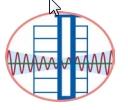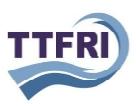- Home
- About
- Events
- Members
- About Members
- Member Institutions
- Australia
- Austria
- Bangladesh
- Canada
- China
- Colombia
- Egypt
- France
- Germany
- Ghana
- India
- Indonesia
- Iran (Islamic Republic of)
- Italy
- Japan
- Korea, Republic of (South Korea)
- Lao PDR
- Malaysia
- Mexico
- Nepal
- New Zealand
- Phillippines
- Sri Lanka
- Sudan
- Switzerland
- Taiwan
- Thailand
- Turkey
- United Kingdom
- United States
- Vietnam
- Membership
- Activities
- Resources
- GADRI Archives
- Home
- >
- Members
- >
- Member Institutions
- >
- Taiwan
 |
National Center for Research on Earthquake Engineering (NCREE)
|
| Outline The National Center for Research on Earthquake Engineering (NCREE) was established in October 1990. Its laboratory, equipped with a tri-axial shaking table, an L-shape reaction wall system, and a large strong floor test bed allows earthquake engineering simulations of structural components or systems in full-scale. Missions
[detail] --> |
|
 |
Taiwan Typhoon and Flood Research Institute (TTFRI)
|
| Outline The Taiwan Typhoon and Flood Research Institute (TTFRI) was established in 2011. Besides serving as an information-sharing platform to support academic research, TTFRI develops advanced prediction techniques of typhoon and flood to assist government agencies in disaster prevention, to mitigate the social and economic impacts of typhoon/flood-related disasters. Meanwhile, TTFRI focuses on typhoon and floodrelated researches with regional characteristics and also devotes itself to nurturing talents for future worldleading researchers. Missions
[detail] --> |
|
 |
Disaster Prevention Research Center (DPRC)
|
| Outline On July 31, 1996 , Typhoon Herb brought a tremendous rain and caused severe floods and sediment-related disasters especially debris flow disaster along the Chen-Yo-Lan river, the disaster prevention becomes a focal point as well as common needs of society. Established in October, 1996, the Disaster Prevention Research Center (DPRC) of National Cheng Kung University (NCKU) is a part of the University's General Center in research, as well as one of the main institutions for disaster prevention and mitigation in Taiwan. DPRC is established with the purpose of improving the technology and countermeasures of disaster prevention, and also study a suitable technical code for disaster prevention and rescue with specialists and researchers. The main missions are as following:
|
|
Tainan Hydraulics Laboratory (THL)
|
|
| Outline In the light of the nationwide contribution of hydraulic engineering, THL aims focus on using educational cooperative support system to resolve engineering problems. In the early days, THL endeavored in the research of harbor and marine construction and today its contribution has gained international reputation. The succeeding mission of THL is: 1.) Investigation, experiment, and analysis in the area of hydraulic and marine engineering; 2.) Research on national economic development and planning; 3.) Compiling and supervising projects for Water Resource Agency, Ministry of Economic Affairs; 4.) Creating hydraulic and marine database as well as Geographic Information System (GIS). 5.) Assisting interdisciplinary instruction, research, and practical training in order to make industries, officials, and academics into a whole and thus to achieve the terminal goal, globalization. [detail] --> |
|
|
|
National Science and Technology Center for Disaster Reduction (NCDR)New Taipei City |
| Outline Taiwan has beautiful natural environments, but it has a unique geographic location. It is situated in the subtropical monsoon region. There are plum rains every May~June and typhoons every July 7~October. This special type of climate often brings about torrential rains. Also, the steep landform and short river connections often cause serious flooding. Meanwhile, since it is located at the border of the Eurasian Plate and the Philippine Sea Plate, it is considered one of the regions in the world with the most frequent felt earthquakes. Therefore, the frequent occurrences of natural disasters often result to serious damage and loss of lives and properties. The society often shows much concern toward disaster related problems. The government and the private sector also engage in disaster prevention and response works. However, due to rapid economic developments and social changes, disaster prevention works are less than adequate at present. In recent years, improved standards of living have resulted to higher demands for the protection of lives and properties. The government also finds it essential to promptly formulate effective disaster prevention and response strategies, strengthen disaster prevention technology research results and implement them in disaster prevention operations. [detail] --> |
|
 |
Center for Weather Climate and Disaster Research (WCDR)
|
Outline
[detail] --> |
|



